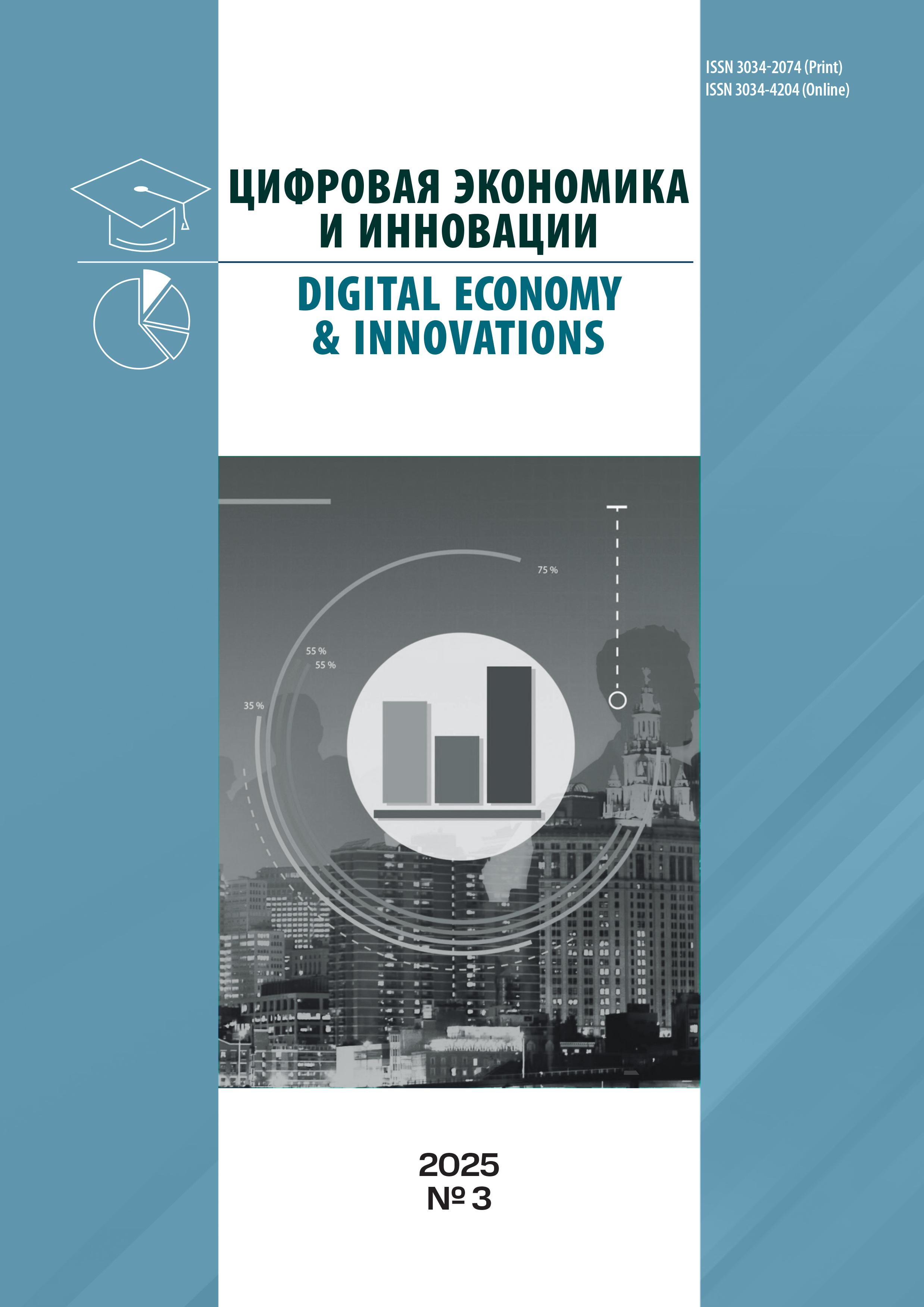No 3 (2025)
- Year: 2025
- Published: 01.10.2025
- Articles: 3
- URL: https://vektornaukieconomika.ru/jour/issue/view/65
-
Description:
Published 30.09.2025.
Full Issue
The influence of external factors on excess option volatility
Abstract
In the context of increasing geopolitical and macroeconomic instability, identifying and accounting for factors influencing option volatility is of particular interest to practicing investors. Over the past few years, the volumes of option trading have demonstrated steady growth, surpassing the volumes of futures trading, demonstrating the growing role of options in the structure of financial markets. High turbulence of economic processes leads to low risk management efficiency in options trading. This problem can be solved through a more accurate assessment of volatility price formation factors. The use of modern economic statistical analysis methods, including vector autoregressive (VAR) models, the generalized autoregressive conditional heteroscedasticity (GARCH) model, and machine learning techniques, allowed carrying out a comprehensive analysis aimed at identifying relevant variables and developing approaches to incorporating them in option volatility modeling. The authors focused on expanding and deepening scientific understanding of the nature and mechanisms of option volatility formation in the face of environmental instability. It is proved that geopolitical shocks and economic uncertainty have a significant impact on volatility, and that this impact is asymmetric: emerging markets demonstrate greater sensitivity to these factors than developed markets. The results and conclusions obtained can be used to forecast excess option volatility, which, when taken into account, will allow developing more profitable investment strategies.
 7-20
7-20


Development of the digital financial assets market in the context of the digital transformation of the global economy
Abstract
The recent rise in popularity of cryptocurrencies, the real asset tokenization, and the emergence of central bank digital currencies (CBDC) are stimulating the formation of a new economic sector – the digital financial asset (DFA) market, which is transforming traditional approaches to investment, settlements, and regulation. The correlation of national economies with these trends largely determines both their global competitiveness and their overall development independence. This paper sets and implements the objective of a comprehensive study of the DFA market through its key segments – cryptocurrencies, stablecoins, tokenized assets, and central bank digital currencies – in terms of such indicators as the dynamics of these sectors, capitalization, and geographic distribution. In addition to identifying trends specific to each sector, the study results show that the DFA market is structurally evolving from cryptocurrencies to asset tokenization (RWA) and stablecoins, and then to CBDC. The identified patterns allowed developing a three-stage model for the DFA market adaptation in Russia. The model includes stages of adaptation (regulatory liberalization, launch of the digital ruble), integration (commodity export tokenization, stablecoin settlements in the EAEU), and transformation (introduction of digital financial assets in small and medium-sized enterprises), issuance of sovereign digital assets). The results obtained can be used by regulators and financial institutions to formulate a strategy for developing digital finance in the context of sanctions and to achieve technological sovereignty.
 21-29
21-29


Technological innovations and premature deindustrialization: evidence from middle-income countries
Abstract
Premature deindustrialization (PDI) has emerged as a critical challenge for middle-income countries amidst rapid technological innovations and globalization. This study explores how technological innovations (TI), measured by patent applications, influence PDI across 89 middle-income countries from 1980–2022. A novel composite index, integrating income levels and manufacturing sector contributions (value-added and employment shares), is developed to quantify PDI. Employing robust econometric techniques, including Ordinary Least Squares (OLS) with Oster’s stability test and Instrumental Variable Generalized Method of Moments (IV-GMM), we find that TI significantly reduces PDI’s likelihood. These results, consistent across subsamples and multiple robustness checks, underscore the pivotal role of innovation in fostering sustainable industrial growth. This research offers critical insights for policymakers aiming to balance technological advancement with industrial development in middle-income economies.
 31-50
31-50








